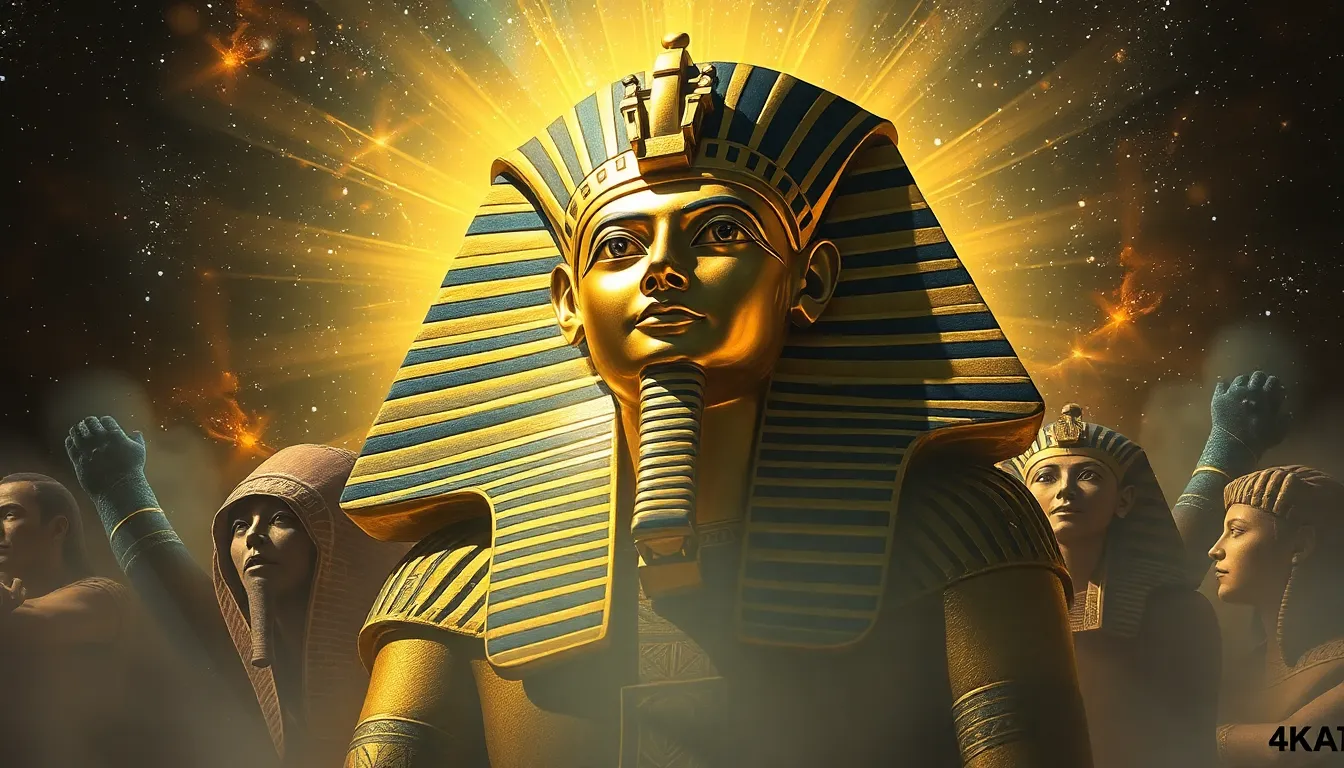The Pharaoh’s Divine Connection to the Cosmos and Beyond
I. Introduction
The Pharaoh of ancient Egypt was more than just a ruler; he was considered a divine figure, a living god on earth, representing the bridge between the gods and the people of Egypt. This unique role placed the Pharaoh at the center of religious and political life, making him a pivotal character in the intricate tapestry of ancient Egyptian society.
Divine connections were essential in ancient beliefs, as they dictated the balance between the mortal realm and the divine. The Pharaoh’s ability to mediate between these realms was believed to ensure prosperity, stability, and harmony within the kingdom. This article aims to explore the Pharaoh’s profound connection to the cosmos, illustrating how these beliefs shaped his authority and the culture of ancient Egypt.
II. The Pharaoh as a Divine Figure
Historically, Pharaohs were viewed as intermediaries between the gods and the people, a concept that reinforced their absolute power. The legitimacy of a Pharaoh was often tied to divine favor, which was believed to be essential for the nation’s well-being.
Central to this divine role is the concept of Ma’at, which embodies the principles of truth, balance, and cosmic order. The Pharaoh was responsible for upholding Ma’at, ensuring that harmony prevailed in both the heavens and the earth.
The Pharaoh’s divine lineage also played a significant role in their authority. Many Pharaohs claimed descent from the gods, such as Horus, which legitimized their reign and reinforced their status as divine rulers.
III. Cosmology in Ancient Egypt
Ancient Egyptian cosmology offered a rich and complex worldview that influenced daily life and religious practices. The Egyptians viewed the universe as a harmonious whole, where celestial bodies had significant roles in both mythology and governance.
- The Sun: Represented by the god Ra, the sun was central to Egyptian cosmology, symbolizing life, growth, and renewal.
- The Moon: Associated with the god Thoth, the moon played an essential role in marking time and was vital for agricultural cycles.
- The Stars: Considered the manifestations of the gods, stars were believed to guide the Pharaoh and influence events on earth.
The alignment of the Pharaoh’s rule with celestial occurrences was seen as a sign of favor from the gods, reinforcing their authority and divine connection.
IV. Temples and Sacred Sites: Windows to the Cosmos
The architecture of ancient Egyptian temples and sacred sites was not merely functional; it served as symbolic representations of the cosmos. Temples were designed to be microcosms of the universe, connecting the earth with the heavens.
Many sacred sites, such as the pyramids and temples at Karnak and Luxor, were astronomically aligned. These alignments allowed for specific celestial events, such as solstices and equinoxes, to be observed and celebrated with rituals.
Rituals performed at these sites aimed to connect with celestial forces, invoking the gods’ blessings and reinforcing the Pharaoh’s divine authority.
V. The Afterlife and Cosmic Journey
The beliefs surrounding the afterlife were deeply tied to the cosmos. The Pharaoh’s journey after death was viewed as a critical passage, where he would navigate the starry sky to join the gods.
The Book of the Dead, a funerary text, contains many cosmological references that guide the deceased through the afterlife. This text illustrates the importance of celestial navigation, with stars serving as markers for the soul’s journey.
For the Pharaoh, this journey was not just an end but a continuation of his divine role in the cosmos, where he would take his place among the gods.
VI. Astronomy and Astrology in Pharaoh’s Governance
The Pharaoh’s governance was significantly influenced by astronomy and astrology. Priests and astronomers played crucial roles in advising the Pharaoh, using their knowledge to interpret celestial events and their potential impact on the kingdom.
- Celestial Events: Eclipses, solstices, and planetary alignments were observed and interpreted as omens, affecting agricultural and political decisions.
- Agricultural Planning: The flooding of the Nile, crucial for farming, was predicted using astronomical observations, ensuring food security.
- Legitimacy: Astrology influenced the Pharaoh’s decisions, with celestial signs seen as validations of their rule and actions.
VII. Artistic Representations of Cosmic Connections
Art in ancient Egypt served as a powerful medium to express the Pharaoh’s divine connection to the cosmos. Iconography and symbolism in art often depicted celestial themes and the Pharaoh’s relationship with cosmic deities.
- Celestial Deities: Pharaohs were frequently represented with the sun disk or surrounded by stars, emphasizing their divine status.
- Cosmic Symbolism: Motifs such as the sky goddess Nut arching over the earth represented the connection between the divine and the mortal realms.
- Interactions with Gods: Art depicted the Pharaoh engaging with gods, reinforcing their role as intermediaries and divine rulers.
Through these artistic representations, the Pharaoh’s connection to the cosmos is immortalized, reflecting the cultural significance of these beliefs.
VIII. Conclusion
In summary, the Pharaoh’s multifaceted connection to the cosmos was integral to their identity and authority in ancient Egypt. This divine relationship influenced governance, religious practices, and societal norms, leaving an enduring legacy that resonates in modern culture.
As we reflect on these ancient beliefs, we recognize the profound intersection of divinity, governance, and the cosmos, illustrating the timeless human quest to understand our place in the universe.




